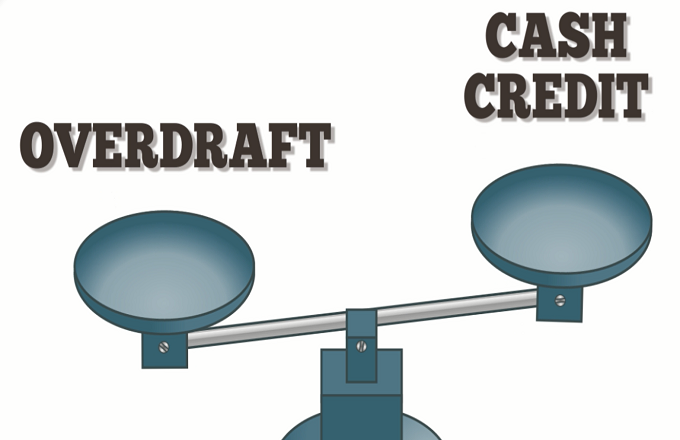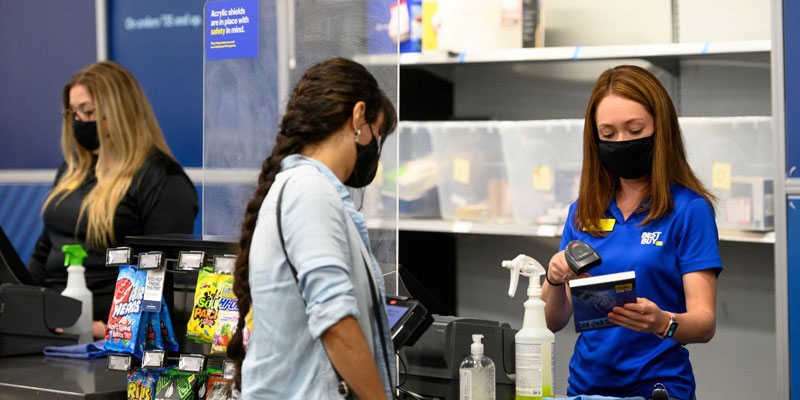Overdraft and cash credit are two kinds of financing for short-term needs that banks offer to their clients. Both are designed to stop the check from going through the ring or prevent debit cards from being denied when there is a shortage of funds in the checking account. The major difference between these two types of borrowing is how the security is secured. Business accounts are more likely to get cash credit, which usually requires collateral. Overdrafts, on the other hand, permit account holders to carry a negative balance without having to pay a significant overdraft cost.
How Cash Credit works
Cash credit is typically provided to businesses instead of consumers on their own. Financial institutions like credit unions and banks typically require business customers to provide security as a payment in return for money. The security could comprise a physical asset like property or stock. The credit limit that is granted on an account for cash is typically an amount that is a fraction of the worth of the security that is collateralized.
As stated above, it is a short-term finance solution that business customers have available. If a business customer does not have enough money to cover their expenses, they can use the credit card for regular banking transactions within the credit limit. Contrary to other credit products that charge interest, this one is charged on the daily balance.
The cash credit account can also be referred to as an account for cash reserves. Cash reserves are an uninsured line of credit that functions like overdraft protection. It usually offers greater overdraft limits and lowers actual interest charges, as penalties are not triggered when you use the account.
How to Work an Overdraft
Overdraft is a type of loan provided by a financial institution to individuals. It is linked to a bank account, typically an account with a check. If a person does not have enough money in their accounts to finish the transaction, an overdraft pays for the difference, which allows the account to be turned to a negative balance. Let's say that Mr. Jones has $500 in his account and sends a check for $550. In some instances, the bank will permit him to draw more money from his account to pay for the check, reducing the balance to -$50.
The practice of providing short-term credit to an account holder when their balance falls to zero is overdraft protection. Overdraft protections come in many kinds and performs differently based on bank relationships. It is normal for overdraft protections to join two accounts, which allows the funds to be automatically drawn from reserves if the primary account's balance is below zero.

This function could be useful to avoid overdraft charges or if you don't have enough funds to complete a transaction. Banks will charge customers a fee of up to $38.50--per overdraft and additional interest for the remaining balance if they do not have protection against overdrafts within their bank account. Overdraft protection can also be sold as a separate, unsecured credit line linked to the main account, providing an immediate loan event of an emergency overdraft. This kind of protection against overdrafts doesn't charge overdraft charges; however, it charges interest on the balance of the credit line.
Different Types of Overdraft
The two most popular overdrafts include regular overdrafts on checking accounts and a secured account that lends cash against various financial instruments.
Standard overdraft
An overdraft is making withdrawals of more money from an account than the amount of balance it normally allows. If you've got $30 in your checking account and decide to take out $35 to purchase something, a bank that allows overdrafts will cover the $5 and usually charges a small amount for the service, in contrast to a larger penalty for overdrafts. The customer is generally paid a fee per any transaction greater than the balance in their account, but the different institutions might handle fees differently.
Secured overdraft
Secured overdrafts function as a more traditional loan. Like an account for cash, the money is loaned to a financial institution; however, a wider array of collateral options are available to protect the credit. For instance, customers may be allowed to utilize stocks or mutual funds.

Clean overdraft
It is also possible to have a clean overdraft account in which no particular collateral is offered; however, the overdraft can be granted due to the person's value. In general, this is only available if the borrower is a member of the financial institution with which they have an ongoing relationship with the institution.




